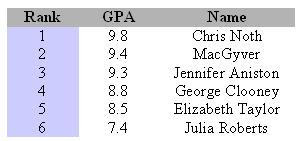The term
scales here simply means
numbers. Before you decide the formula you're going to use in statistical analysis, you have to know what kind of numeric data you have. Different type of numbers (numeric data) needs a different formula.
There are 4 types of scales.
 Nominal scale
Nominal scaleIt is used only to label or name something, and can be replaced with letters. It has no numeric value so it
cannot be added, subtracted, multiplied or divided. For example:

The above question results in numeric data in the form of nominal scale. If the respondent is male

, he will answer 1. If the respondent is female

, she will answer 2. The numbers 1 and 2 are used to label the respondents on the basis of their gender. We can use options [a] for male and [b] for female instead of numbers.
 Ordinal scale
Ordinal scaleIt is used to show ranks. It has no numeric value so it
cannot be added, subtracted, multiplied or divided. For example, the following ranks (the blue column) in Class 1A at Mbebekan Elementary School in semester 1 2009/2010 show ordinal scale:

 Interval scale
Interval scaleIt is used to show numbers which have equal interval between one unit and another. It can be added, subtracted, multiplied or divided. However, it has no absolute zero. The examples are numbers showing temperature and scores.
 Ratio scale
Ratio scaleLike interval scale, it is used to show numbers which have equal interval between one unit and another. It can be added, subtracted, multiplied or divided. It has absolute zero, so the number 0 indicates nothing or no one. The examples include numbers showing length, height, weight or time.









